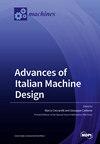Development and Functional Validation Method of the Scenario-in-the-Loop Simulation Control Model Using Co-Simulation Techniques
IF 2.1
3区 工程技术
Q3 ENGINEERING, ELECTRICAL & ELECTRONIC
引用次数: 0
Abstract
With the facilitated development of highly automated driving functions and automated vehicles, the need for advanced testing techniques also arose. With a near-infinite number of potential traffic scenarios, vehicles have to drive an increased number of test kilometers during development, which would be very difficult to achieve with currently utilized conventional testing methods. State-of-the-Art testing technologies such as Vehicle-in-the-Loop (ViL) or Scenario-in-the-Loop (SciL) can provide a long-term solution; however, validation of these complex systems should also be addressed. ViL and SciL technologies provide real-time control and measurement with multiple participants; however, they require enormous computational capacity and low-latency communication to provide comparable results with real-world testing. 5G (fifth-generation wireless) communication and Edge computing can aid in fulfilling these needs, although appropriate implementation should also be tested. In the current paper, a realized control model based on the SciL architecture was presented that was developed with real-world testing data and validated utilizing co-simulation and digital twin techniques. The model was established in Simcenter Prescan© connected to MATLAB Simulink® and validated using IPG CarMaker®, which was used to feed the simulation with the necessary input data to replace the real-world testing data. The aim of the current paper was to introduce steps of the development process, to present the results of the validation procedure, and to provide an outlook of potential future implementations into the state of the art in proving ground ecosystems.利用协同仿真技术开发场景在环仿真控制模型并进行功能验证的方法
随着高度自动驾驶功能和自动驾驶汽车的发展,对先进测试技术的需求也随之产生。由于潜在的交通场景近乎无限,车辆在开发过程中必须行驶更多的测试公里数,而目前使用的传统测试方法很难实现这一点。最先进的测试技术,如 "车辆在环"(ViL)或 "场景在环"(SciL),可以提供一个长期的解决方案;然而,这些复杂系统的验证问题也应得到解决。ViL 和 SciL 技术可提供多方参与的实时控制和测量;但它们需要巨大的计算能力和低延迟通信,才能提供与真实世界测试相当的结果。5G(第五代无线)通信和边缘计算可帮助满足这些需求,但还应测试适当的实施。本文介绍了基于 SciL 架构的实现控制模型,该模型是利用真实世界的测试数据开发的,并利用协同仿真和数字孪生技术进行了验证。该模型是在与 MATLAB Simulink® 相连接的 Simcenter Prescan© 中建立的,并通过 IPG CarMaker® 进行了验证。本文旨在介绍开发过程的各个步骤,展示验证程序的结果,并展望未来在试车场生态系统中的潜在应用。
本文章由计算机程序翻译,如有差异,请以英文原文为准。
求助全文
约1分钟内获得全文
求助全文
来源期刊

Machines
Multiple-
CiteScore
3.00
自引率
26.90%
发文量
1012
审稿时长
11 weeks
期刊介绍:
Machines (ISSN 2075-1702) is an international, peer-reviewed journal on machinery and engineering. It publishes research articles, reviews, short communications and letters. Our aim is to encourage scientists to publish their experimental and theoretical results in as much detail as possible. There is no restriction on the length of the papers. Full experimental and/or methodical details must be provided. There are, in addition, unique features of this journal: *manuscripts regarding research proposals and research ideas will be particularly welcomed *electronic files or software regarding the full details of the calculation and experimental procedure - if unable to be published in a normal way - can be deposited as supplementary material Subject Areas: applications of automation, systems and control engineering, electronic engineering, mechanical engineering, computer engineering, mechatronics, robotics, industrial design, human-machine-interfaces, mechanical systems, machines and related components, machine vision, history of technology and industrial revolution, turbo machinery, machine diagnostics and prognostics (condition monitoring), machine design.
 求助内容:
求助内容: 应助结果提醒方式:
应助结果提醒方式:


